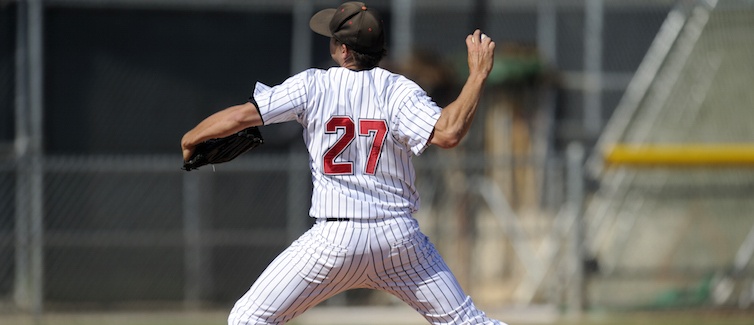Repeated throwing — like the kind that happens in baseball, softball, or football — puts athletes at risk of overuse injuries. Without preparation and active prevention, these injuries have the potential to sideline an athlete. Young athletes are especially susceptible to throwing injuries, since they may not have developed the strength or endurance of older athletes. Whether you’re playing with the team, or practicing at home, knowing how to prevent throwing injuries can help keep you strong and in the game.
Never Miss a Beat!
Subscribe to Our HealthBeat Newsletter!
Thank you for subscribing!
You can now select the specific newsletters you'd like to receive.
You are already subscribed.
Subscribe to more newsletters in our email preference center.
Sorry, an error occurred. Please try again later.
Get Healthy Tips Sent to Your Phone!
Common Throwing Injuries
Throwing injuries usually involve the shoulder or elbow. The ligaments and tendons in these joints can become inflamed, stretched, or torn, causing pain and swelling. Some common throwing injuries include:
- Epicondylitis, or “little league elbow”
- Rotator cuff injury
- Stress fractures
- Superior labrum anterior to posterior (SLAP) tear
- Tendonitis
- Ulnar collateral ligament tear (Tommy John ligament)
- Ulnar neuritis
- Valgus extension overload
When an athlete has pain, they should stop playing and allow the injury time to recover. A minor tear or strain may heal with rest and ice, while a significant one can take months of recovery.
Preventing Throwing Injuries
Knowing how to prevent throwing injuries to the shoulder and elbow is key to keeping athletes healthy throughout the season. Prevention starts with training.
- Cross-train throughout the year. Rather than only playing one sport year-round, try other sports or off-season training to strengthen different muscles and give your pitching or throwing arm a break.
- Do strength and conditioning exercises. Strengthening the muscles around the joint puts less stress on the tendons and ligaments.
- Set pitch/pass limits and change up types. Pitch types and counts are linked to injuries, and it varies by athlete. In youth sports, limit the pitch counts or passes allowed for any one player to prevent overuse injuries. Vary pitch types in baseball and softball as well.
- Follow the Thrower’s Ten. This organized exercise regimen has exercises specifically designed to help pitchers and throwers strengthen their shoulder and arm muscles.
- Warm up and cool down. Complete a full warmup before throwing in practice, and perform a cool-down after any training. Warmup to throw; never throw to warmup.
- Stop when there’s pain. If you, your child, or an athlete on your team experiences pain, have them stop. Pain is your body telling you that something is wrong. Sometimes rest can be enough for an athlete to recover and return to the game. Playing through pain often leads to more severe injuries and more time spent in recovery later on. Avoid using NSAIDs like ibuprofen to “get through” a practice or game. These medications should be used sparingly and when directed by a medical professional.
Taking care to avoid overuse injuries can help keep athletes at peak performance and help protect young players from long-term injuries.
If you suspect that you have a throwing injury, please consult your doctor or contact UPMC Sports Medicine at 1-855-93-SPORT (77678).
About Sports Medicine
An athletic lifestyle carries the potential for injury. Whether you’re an elite athlete or a weekend warrior, UPMC Sports Medicine can help. If you are looking to prevent, treat, or rehabilitate a sports injury, our multidisciplinary team of experts can help you get back into the game. If you are seeking to improve your athletic performance, we can work with you to meet your goals. We serve athletes and active people of all ages and experience levels. Our goal is to help you keep doing what you love. Visit our website to find a specialist near you.
